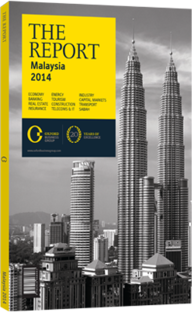Getting started: The government is looking to capitalise on local talent
The local environment is one that encourages and breeds tech start-ups. The economy is open, people are well educated, the law is straightforward, internet is fast and cheap, and most other costs are lower than they are in places like Singapore and Hong Kong. In Malaysia, it is easy for people to get together, test and market their tech ideas and form businesses around these ideas. But while entrepreneurs have been active in Malaysia and have built successful companies, the country has had few large technology-related initial public offerings (IPOs). For a number of reasons, it has had a tough time achieving the sort of dramatic exits that generate both interest in the market and, crucially, capital for additional investment in the sector.
Low Costs
Malaysia is cost effective in terms of talent. According to the National ICT Association of Malaysia (PIKOM), salaries for IT workers are lower in Malaysia than in East and South Asia, except Indonesia, India and the Philippines. They are much cheaper than tech workers in developed economies, earning less than a third of tech workers in the US and less than a quarter of those in Australia. This comparative price advantage in terms of skilled workers contributes to a good environment for start-ups. A 2013 study conducted by the Alliance for the Affordable Internet found that among developing or emerging economies Malaysia had the cheapest internet.
The government provides considerable support to start-ups. Malaysia’s Multimedia Super Corridor is an initiative to promote local IT technology development, attract technology from overseas and assist companies seeking to get started and grow. The country also provides significant financing via the SME Bank, which makes loans available to start-ups. Social media and related crowdsourcing technologies are also helping to make the job of finding start-up capital less difficult. These networks also make it easier for potential investors to evaluate the scene on the ground and get a better understanding of the new ideas, companies, markets and models that are being developed in Malaysia.
Many Start-Ups
Malaysia has built a large number of successful start-ups. MobilAds, a Penang-based company that specialises in interactive mobile banners, launched in 2012, received funding from an angel investor and a US-based strategic partner. Soft Space allows merchants to receive credit card payments through their mobile devices. The company said it has the largest payments client base in Asia, and it is already doing business with CIMB Bank and Hong Leong bank. GrabTaxi is not only in six markets around the region, but has developed a unique model. It mixes the basics of taxi hire with interactivity, allowing customers to give feedback and get bad drivers potentially banned from the network. Other Malaysian start-ups include Suzerein, which offers online time management solutions for companies, and Pictochart, a Penang company that built a product for creating graphics that can be immediately published on the web.
Funding Gaps
Malaysia still faces a crucial funding gap, according to Timothy Tiah, founder of Nuffnang and ChurpChurp. He said companies can often get seed capital locally and get their businesses going, but it is not so easy to get financed during the crucial growth stage. While the capital markets are well developed in Malaysia, they are not well suited or properly structured for large but risky fund raisings. Private money in the region is often reluctant to take on larger bets. Tiah also said local capital is expensive and often comes with considerable conditions attached.
He also noted the lack of big exits ultimately keeps the entrepreneurial creations of Malaysia relatively small. South-east Asia rarely has the large IPOs that are often found in Western markets. As a result, the sector lacks the excitement and promise that can be found in places like Silicon Valley. The dearth of large IPOs also has practical consequences. Exits in the region are often by acquisition; Silicon Valley firms come in and buy-out the owners, for example. The sums spent are not giant and, as a result, the founders are then not able to become significant financiers of start-ups.
You have reached the limit of premium articles you can view for free.
Choose from the options below to purchase print or digital editions of our Reports. You can also purchase a website subscription giving you unlimited access to all of our Reports online for 12 months.
If you have already purchased this Report or have a website subscription, please login to continue.

